Fire & Smoke Assessments
LAQ Environmental Health and Safety now offers comprehensive professional services for fire and smoke damage!
Our fire and smoke assessment report serves as a cornerstone for informed decision-making, instilling confidence in the abatement process, and contributes to the overall safety and well-being of the building's occupants.
An LAQ EHS Fire & Smoke Assessment consists of two components:
-
 1. Evaluate the extent of damage assessment to determine where the smoke traveled and identify exposure concerns.
1. Evaluate the extent of damage assessment to determine where the smoke traveled and identify exposure concerns.
-
 2. Create a smoke abatement protocol to determine which building materials are salvageable.
2. Create a smoke abatement protocol to determine which building materials are salvageable.
While evaluating the extent of damage, our team will utilize a variety of tools depending upon the situation.
-
 For example, the fire department may have extinguished the fire with water. In that case, LAQ EHS would do a moisture survey during the evaluation.
For example, the fire department may have extinguished the fire with water. In that case, LAQ EHS would do a moisture survey during the evaluation.
-
 If considerable time has passed since the fire department extinguished the fire, mold may appear throughout the structure. The evaluation would address concerns related to mold exposure as well.
If considerable time has passed since the fire department extinguished the fire, mold may appear throughout the structure. The evaluation would address concerns related to mold exposure as well.
-
 Sometimes, a fire can create a more hazardous situation due to the presence of certain materials. For example, if lead-based paint or asbestos-containing building materials were burned, then the evaluation would consider the effects of that.
Sometimes, a fire can create a more hazardous situation due to the presence of certain materials. For example, if lead-based paint or asbestos-containing building materials were burned, then the evaluation would consider the effects of that.
What happens after the initial site inspection?
After a thorough site inspection, sampling may be necessary for various reasons. While the inspection identifies visibly damaged areas, sampling may reveal hidden pathways for smoke damage.
LAQ Environmental Health and Safety's fire and smoke assessments include many different sampling strategies to answer these questions.
Sample strategies may include:
-
 Surface sampling
Surface sampling -
 Air sampling
Air sampling -
 Corrosivity testing
Corrosivity testing -
 And more!
And more!


